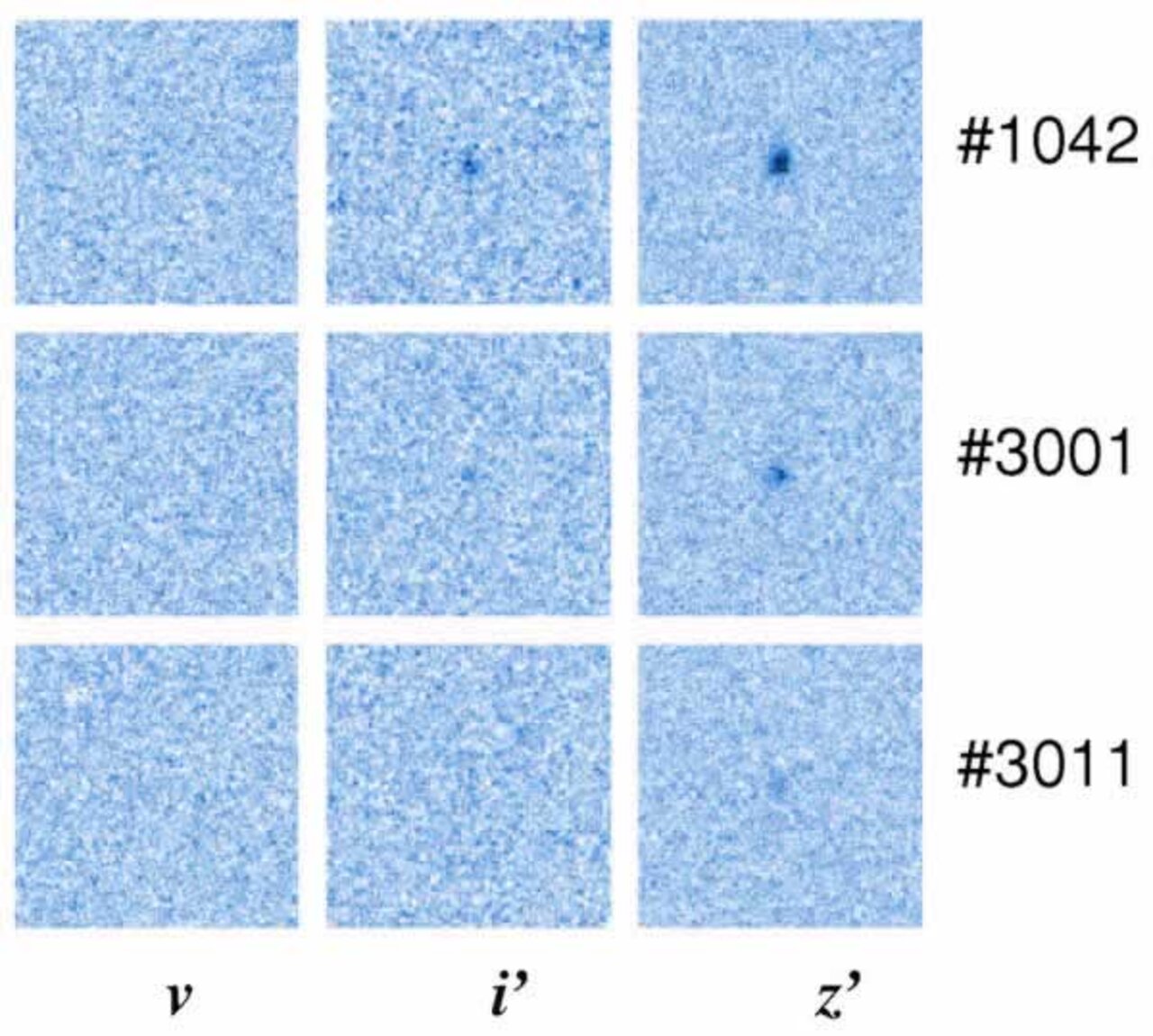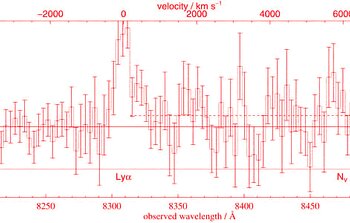Gemini Probes Galaxy Evolution a Billion Years After the Big Bang
March 8, 2004

The GLARE (Gemini Lyman Alpha at Reionisation Era) team, an international group of astronomers using Gemini to study the early universe, has just discovered a surprisingly large number (three) very high redshift galaxies ( z = 5.83, 5.79 and 5.94) in a same region of the southern GOODS field. Two of the Lyman alpha emitters measured are the faintest of any previous spectroscopic study. The objects are red (i' - z') > 1.3 and the faintest one has a z' magnitude of 27.15. This finding suggests the existence of large-scale structure at this redshift. This field is very close to the Hubble Ultra-Deep Field (UDF), a small portion of sky in the southern hemisphere recently imaged by the Hubble Space Telescope. The UDF is the deepest imaging ever done of a region in the sky. The completed survey and the images are being released by the Space Telescope Science Institute. The UDF will be a unique dataset for astronomers during the decade to come. The GLARE team started taking spectra of objects in this region with the Gemini South Telescope last November.
Spectacular progress has been made lately on the population of galaxies at greater than 90% look back time in cosmic history. The standard approach when identifying very distant galaxies is to obtain deep imaging in several color bands and to look for the "drop-out" objects. Young galaxy spectra are generally dominated by the emission line of hydrogen Lyman-alpha (121.6 Angstroms). The flux on the blue side of Lyman-alpha is highly depressed because of absorption in the intervening intergalactic medium, while the red side has a weak stellar continuum. The latter may be detected with only very deep spectroscopic exposures like those done with GMOS-N&S using the nod and shuffle technique. For high redshift objects, the drop-out effect translates into ta non-detection in optical colors such as r, i, but detection in the z, or J and H band in the near infrared (see Figure 1).
The Gemini Lyman Alpha at Reionisation Era (GLARE) survey aims to obtain extremely deep spectra of very faint high-redshift star-forming galaxies, selected via i - z color from the HST/UDF survey. The present discovery is from the first 7 hours of spectroscopy obtained with GMOS-S at Gemini South. The total exposure time, when completed, will be 125 hours, producing extremely deep spectra.
The first GLARE objects show narrow Lyman alpha lines characteristic of star-forming galaxies and do not show Active Galaxy Nuclei emission. The rest-frame ultraviolet spectra of the objects are likely to be dominated by star forming. This means that these galaxies are "normal" distant star forming galaxies known as Lyman Break Galaxies.
More details can be found in the original paper by Elizabeth Stanway, Karl Glazebrook, Andrew J. Bunker, Roberto G. Abraham, Isobel Hook, James Rhoads, Patrick J. McCarthy, Brian Boyle, Matthew Colless, David Crampton, Warrick Couch, Inger Jørgensen, Sangeeta Malhotra, Rick Murowinski, Kathy Roth, Sandra Savaglio and Zlatan Tsvetanov: "Three Ly-alpha Emitters at z ~ 6: Early GMOS/Gemini Data from the GLARE Project", The Astrophysical Journal, 604:L13-L16, 2004 March 20.
One related study of particular interest is the recent paper by R. Pelló, D. Shaerer, J. Richard, J.-F. Le Borgne and J.-P. Kneib, "ISAAC/VLT observations of a lensed galaxy at z = 10.0" Astronomy & Astrophysics, vol. 416, issue 3, p. L 35.

